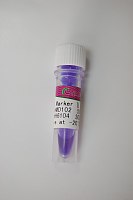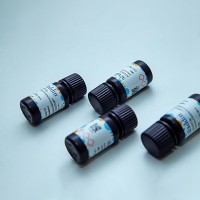Detection of Mutations in DNA and RNA by Chemical Cleavage
Chemical cleavage of mismatch (CCM) is one of the mismatch cleavage methods, all of which allows scanning of 1–2 kb lengths in one test (reviewed in ref . 1 ). Heteroduplexes are formed between wild-type and mutant DNA (or RNA) and reacted with hydroxylamine, which modifies matched or unmatched C bases (see Fig. 1 ) and separately with osmium tetroxide, which modifies mismatched or unmatched T bases. The DNA is then cleaved at the modified base with piperidine (2 ). Fragments are sized on sequencing gels and often on sequencing machines (3 ) to indicate the site of the mutation. Recent protocols dictate that all four strands be labeled (e.g., see ref. 3 ) to give two chances of detecting the mutation. This is because the only mismatches shown to be negative in this protocol are one-third of TG mismatches and labeled mutant strands allow these mismatches to be detected by cleavage at the complementary CA mismatch. Thus, this method almost guarantees detection of all mutations by cleavage at mismatched or unmatched (for deletions or insertions) bases.
![]()






